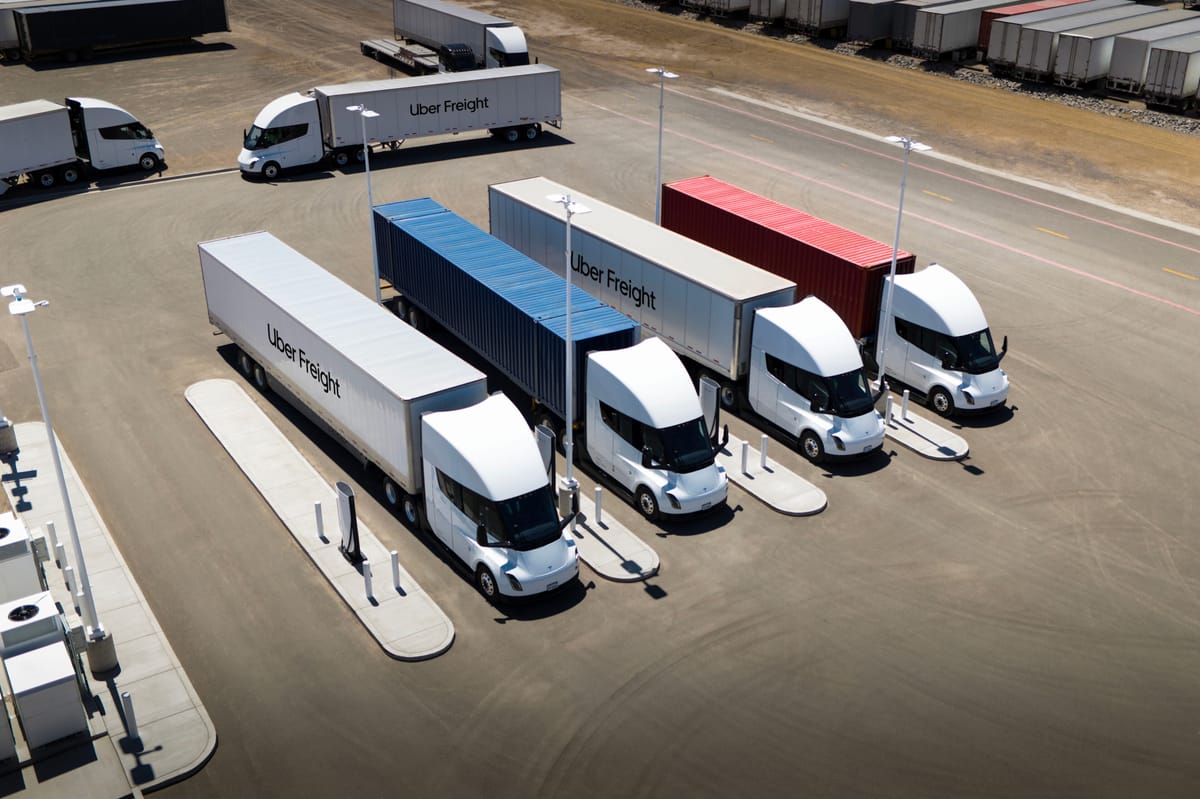🎣 Freight Alley Trip Recap
Join us as we sit down with Grace Maher and Reed Loustalot for a Freight Gong Friday recap.
FreightWaves data shows truckload haul lengths hit an all-time low of 522 miles in August. With shorter hauls, EV adoption becomes more practical, adding a new dynamic for freight brokers.

FreightWaves’ latest Chart of the Week shows that the national average length of haul fell to historic lows this year, bottoming out at 522 miles in August before recovering to around 571 miles. The August trough marked a 13% year-over-year decline, the steepest drop since the data set began in 2018.
According to FreightWaves' SONAR’s tender data, the decline stems from a sharp reduction in long-haul freight demand, with loads over 800 miles deteriorating the most. The “tweener” segment of 450–800 miles followed closely, while sub-100-mile short-haul loads are the only category showing consistent year-over-year growth.
Longer hauls are losing share to intermodal, where rail can be 15–30% cheaper than trucking for non-urgent moves. Every major port has nearby rail access, giving shippers an alternative for inland freight.
Geopolitical uncertainty and tariff risks have also led shippers to front-load inventory into warehouses earlier in the year. While this drives up warehousing costs, FreightWaves' Logistics Managers’ Index (LMI) shows companies prefer the expense to risking shortages or unexpected duties, such as the now-paused 145% tariff on Chinese imports.
This strategy spreads transportation needs over time, softening demand for urgent long-haul trucking and reshaping the balance between truck and rail.
Our earlier reporting on Tesla and Uber Freight’s Dedicated EV Fleet Accelerator Program offers an added lens into this trend. The initiative pairs Tesla Semi purchase subsidies with pre-arranged freight and route planning.

With the average haul now trending closer to 500 miles, shorter-distance trucking networks could make electric adoption more viable. Current EV semis face challenges with ranges over 300 miles, but as hauls shorten and routes become more predictable, programs like Uber Freight’s create a clearer path for EV integration.
Uber Freight CEO Rebecca Tinucci, formerly head of Tesla’s charging division, noted this about the role of route planning and charging infrastructure: “Customers can see every document, every check, every step in the same system,” she said, describing how end-to-end visibility and dedicated freight can ensure utilization from day one.
The shift toward shorter hauls means brokers face a dual adjustment:
Source: FreightWaves
Join over 14K+ subscribers to get the latest freight news and entertainment directly in your inbox for free. Subscribe & be sure to check your inbox to confirm (and your spam folder just in case).